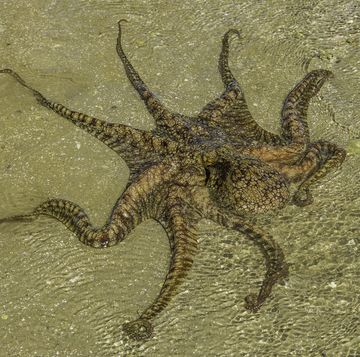- In a new paper, researchers describe finding the gene that causes Mexican cavefish to lose their vision.
- The same gene responsible for this evolutionary change in the fish is also responsible for homocystinuria, a disease affecting humans.
- Studying these cavefish could help scientists figure out how to develop treatments for those afflicted with homocystinuria.
The key to finding a cure for homocystinuria—an inherited disease that affects the processing of amino acids within the human body—may lie within Astyanax mexicanus, also known as the Mexican cavefish. It's easy to distinguish this fish from others because they have no eyes.
According to a paper in Nature, “cavefish embryos initially develop eyes, but they subsequently degenerate and become vestigial structures embedded in the head.” A. mexicanus is an evolved version of the Mexican tetra and has adapted to living in spaces where light is basically nonexistent, making vision unnecessary.
The paper authors identified an enzyme, cystathionine ß-synthase a (cbsa), as one of the genes that causes “eye degeneration” in these cavefish. They also note that in humans, the same mutated gene causes homocystinuria, which can result in eye abnormalities among other things. Because the same gene is responsible for vision loss in cavefish and homocystinuria in humans, further analysis of A. mexicanus may help scientists develop treatments for people suffering from the condition.
“In fact, the small eyes of [cavefish] larvae resemble the eyes of some homocystinuria patients in showing an ‘off-center’ lens,” write the authors.
This mutation can cause myriad health problems being that restricted blood flow to the eye area is one of the symptoms. Other maladies include abnormal circulatory systems, blood clots, aneurysms, brain hemorrhages, and heart attacks.
Because cavefish have evolved to live in an oxygen deficient environment, researchers weren't surprised to find that embryonic specimen exhibited more gene markers for hypoxia in comparison to the Mexican tetra.
“Mexican cavefish are not only surviving with homocystinuria, they're thriving,” says one of the study authors.“One thing we might be able to understand is how these fish recover from hemorrhages in the eye, which could provide insight into treatments for the disease in humans.”















